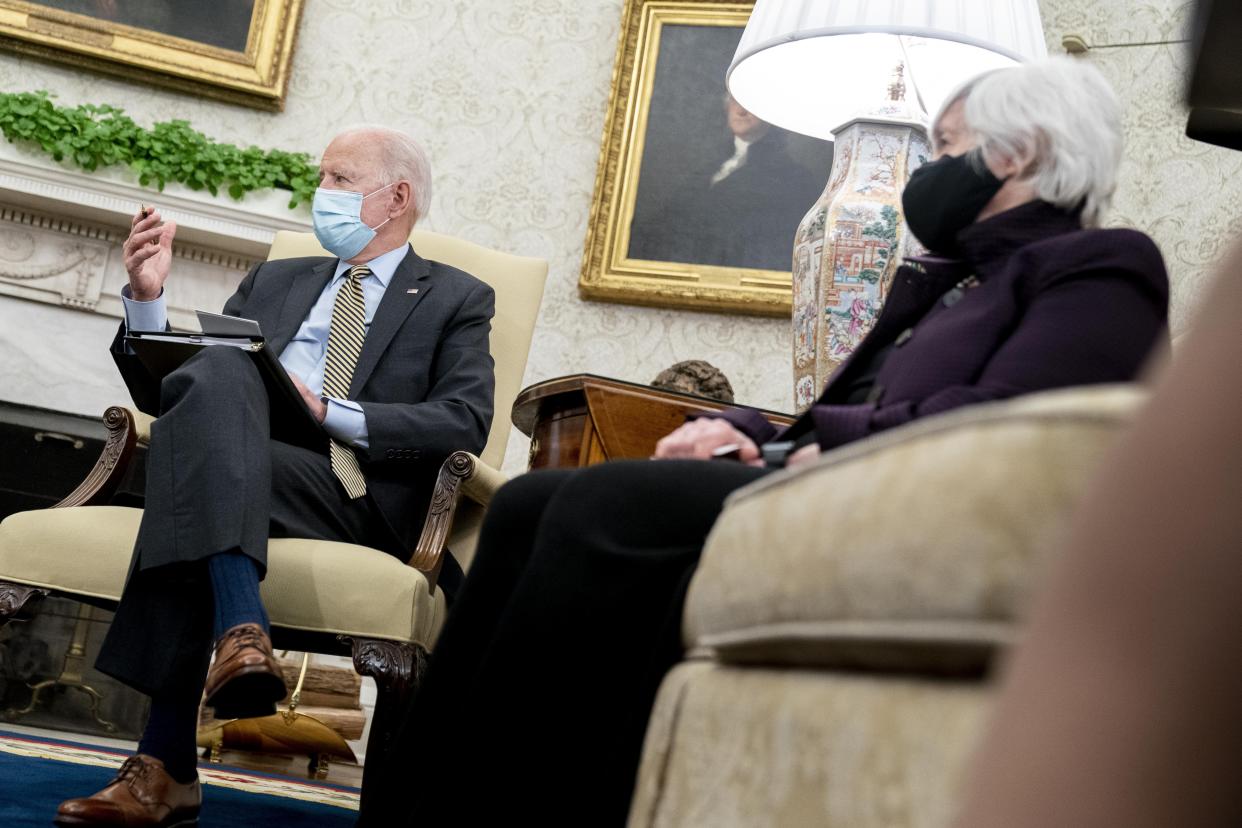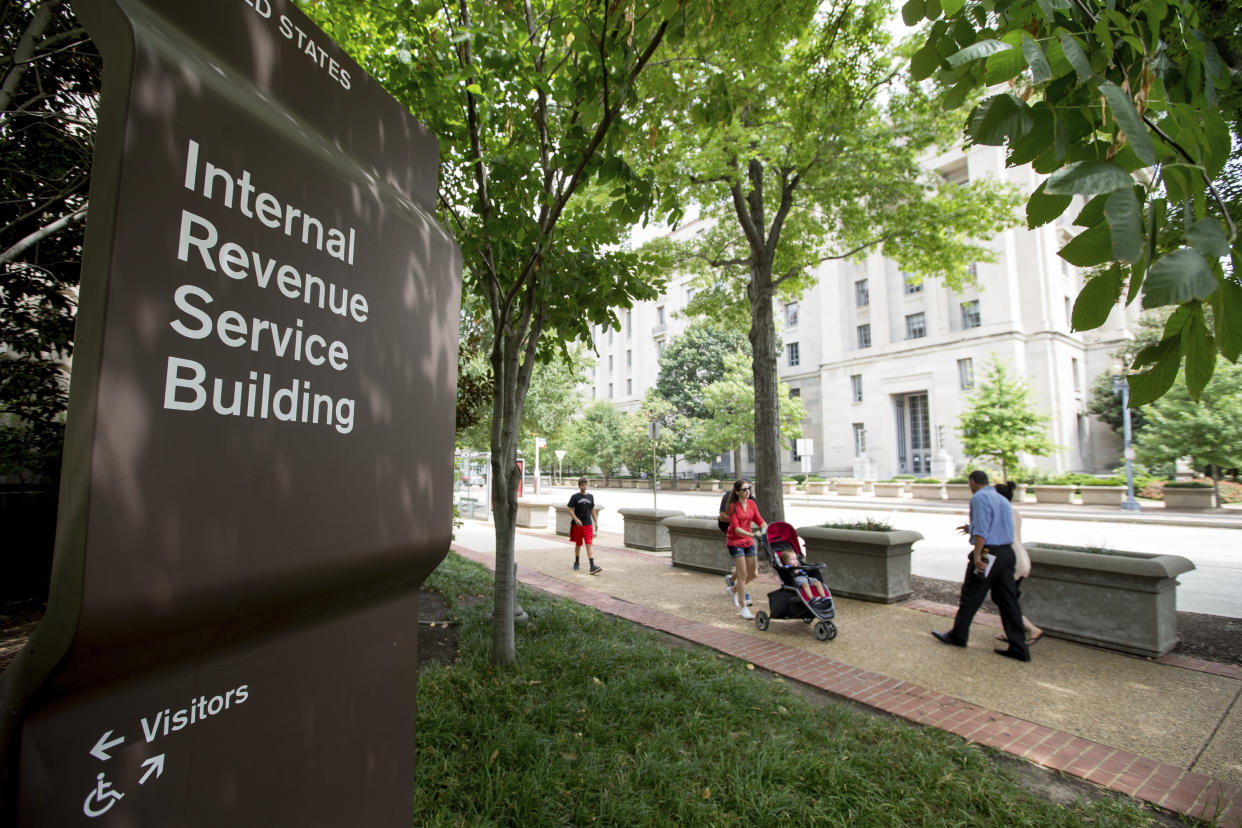A glimmer of hope for the federal budget

The U.S. fiscal outlook is gloomy. But the midyear budget report the Treasury Department recently published contains a surprising bit of good news: Federal tax revenue is running nicely above the pace of last year, before Covid shutdowns ravaged the economy.
The government’s fiscal year begins Oct. 1, and in the first six months of 2021, tax receipts totaled $1.704 trillion. During the same period in the prior year, revenue was $1.604 trillion. So tax receipts in 2021 are running $100 billion ahead of the 2020 pace, or 6.2% higher.
That’s a sign of stability in the economy, and it suggests the federal budget situation could improve once Congress stops flooding the economy with emergency stimulus money and things get back to normal. The gain in tax revenue comes even though there were 6.7 million fewer jobs at the end of March 2021 than in March 2020. Average earnings have surged since the pandemic hit, in part because job losses have been concentrated among lower-paid workers, pushing average pay up. But it’s not entirely a statistical quirk. Total compensation paid to employees in the fourth quarter of 2020, the latest data available, hit a new high, and that has presumably gone higher still during the first three months of calendar year 2021.
Federal tax receipts have risen for both individual income taxes and corporate taxes so far in 2021. Income tax revenue rose from $769 billion during the first six months of 2020 to $825 billion during the same period in 2021. Corporate tax revenue rose from $84 billion to $104 billion. On the whole, that suggests businesses are healthy and their workers are benefiting, too.
None of this means the federal budget is in good shape. The gap between spending and revenue hit a new record of $1.7 trillion for the first half of 2021. Tax revenue covered only half of spending, on account of the $1.8 trillion stimulus bill Congress passed in March and the $900 billion stimulus bill from December. Virtually all of that is borrowed money that adds to the annual deficit and the national debt.
Before Congress passed the latest stimulus bill, the Congressional Budget Office forecast the U.S. budget deficit would be $2.3 trillion in 2021. It will now be considerably higher. Last year’s deficit, $3.1 trillion, amounted to 14.9% of GDP, the most since 1945, when the nation was financing World War II. This year’s deficit could be even larger as a portion of GDP. The total national debt, meanwhile, exceeds $28 trillion, up nearly $5 trillion since the start of 2020.
Does that debt matter? We may find out soon. Economists used to think the scale of government borrowing we now have would “crowd out” private investment, pushing interest rates up and depressing growth. But that hasn’t happened yet and markets have tolerated vast amounts of government debt better than many expected. If a debt crisis is coming, the surge in borrowing during the last 12 months could be the trigger.
Restore IRS funding
Getting the federal budget under control requires, among other things, improving tax revenue as the economy heats up. Solid tax revenue so far in 2021 shows the trend is at least moving in the right direction. Part of the premise for massive amounts of fiscal stimulus as the pandemic hit last year was to speed the eventual recovery and reach trend levels of growth and employment much faster than during the stutter-step recovery that followed the Great Recession, starting in 2009. Among the benefits would be more tax revenue, sooner.

Wringing more tax revenue from the usual sources is just the beginning, however. Internal Revenue Service Commissioner Charles Rettig told Congress on April 13 that the IRS may fail to collect $1 trillion in taxes every year that businesses and wealthy individuals legally owe. That would be tax evasion on a vast scale, and a massive amount of foregone revenue. Democrats in Congress want to restore IRS funding that’s been slashed during the last decade, giving the agency more auditors and tools for forcing evaders to pay what they owe. Even if they do, more aggressive tax collection would accrue slowly.
Uncle Sam also needs to figure out how to get health care spending under control and shore up Social Security, while funding infrastructure investments such as those President Biden is calling for. Biden claims to have a plan for climate change, health care reform and many other things, but not for budget discipline. At some point, we’ll need it.
Rick Newman is the author of four books, including "Rebounders: How Winners Pivot from Setback to Success.” Follow him on Twitter: @rickjnewman. You can also send confidential tips, and click here to get Rick’s stories by email.
Read more:
Get the latest financial and business news from Yahoo Finance
